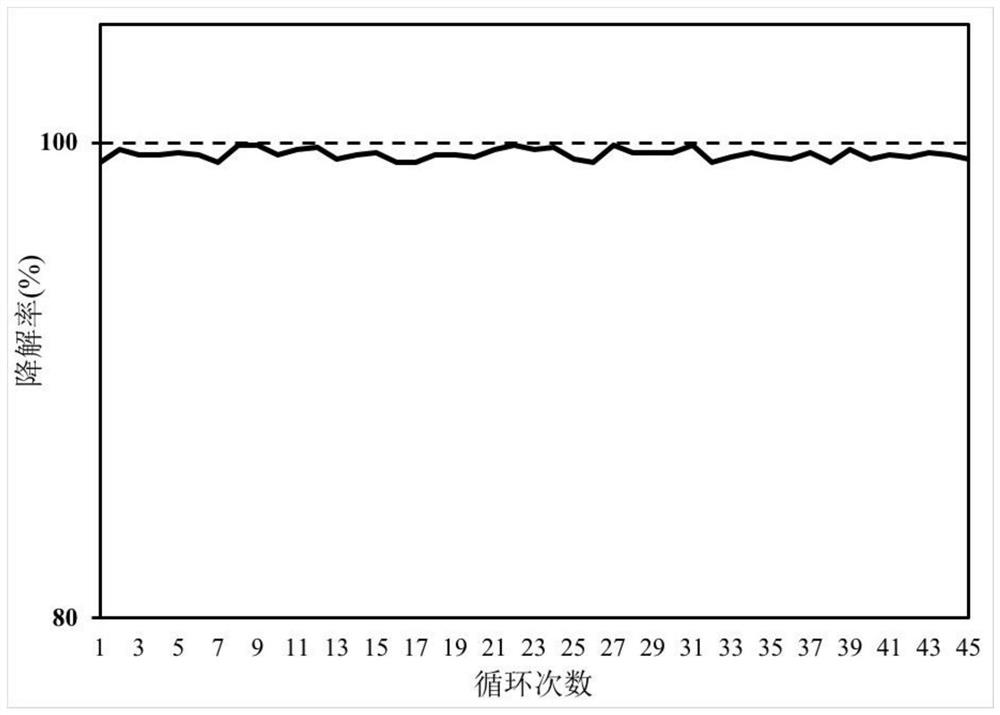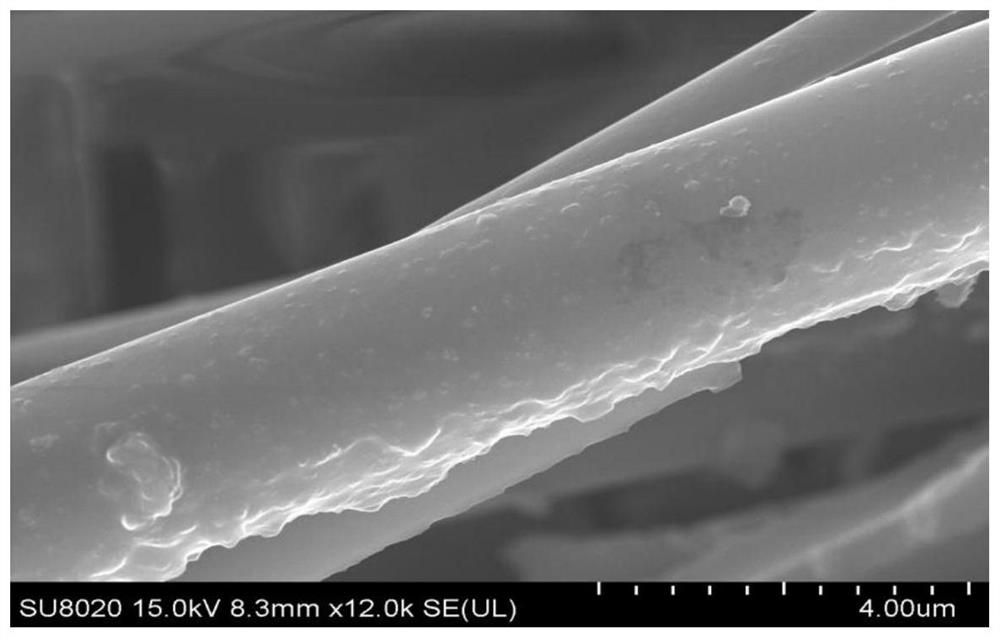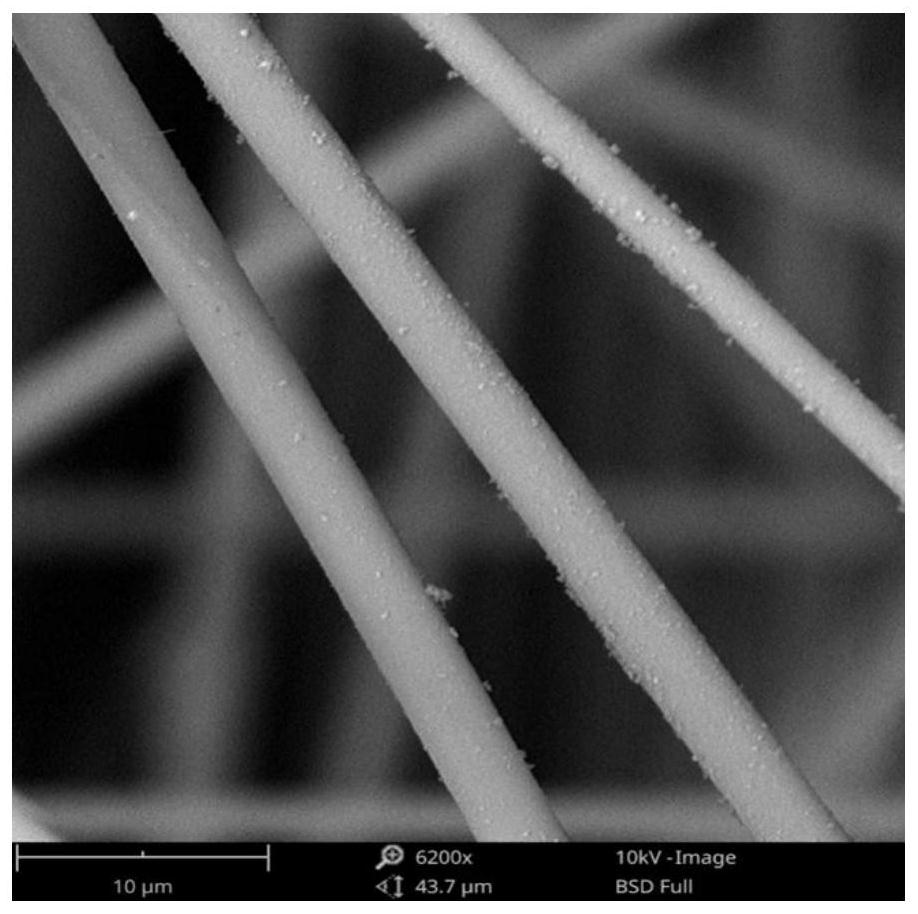A visible-light-responsive n,b co-doped in 2 o 3 /tio 2 Precursor, its preparation method and application
A precursor and co-doping technology, applied in the field of materials science, can solve the problems of limiting the application of photocatalysts, easy agglomeration, and easy powder agglomeration.
- Summary
- Abstract
- Description
- Claims
- Application Information
AI Technical Summary
Problems solved by technology
Method used
Image
Examples
Embodiment 1
[0048] In this embodiment, the visible light responsive N, B co-doped In 2 o 3 / TiO 2 The precursor is synthesized as follows:
[0049] (1) Put 1 mol of tetrapropyl titanate, 120 g of polyethylene glycol and 7.57 g of indium nitrate in a drying reaction kettle equipped with a condenser tube and a drying tube, and heat the reaction under stirring at 100°C until the system is clear and transparent;
[0050] (2) At 100°C, add 0.3 mol of boric acid to the system, and keep it warm for 4 hours;
[0051] (3) At 95°C, add 0.5 mol of ethanolamine to the system, heat to 100°C, and keep warm for 4 hours;
[0052] (4) Adjust the temperature to 90° C., add 0.8 mol of acetylacetone, then drop in a mixture of 0.6 mol of water and 1.9 mol of n-propanol, reflux for 1 hour after dropping, and remove the solvent under reduced pressure after dropping the temperature to obtain the precursor.
[0053] The precursor has good solubility in any solvent or mixed solvent of ethanol, n-propanol, isop...
Embodiment 2
[0057] In this embodiment, the visible light responsive N, B co-doped In 2 o 3 / TiO 2 The precursor is synthesized as follows:
[0058] (1) Place 1 mol of tetraisopropyl titanate, 6.51 g of indium sulfate and 5 g of polymethyl methacrylate in a drying reaction kettle equipped with a condenser tube and a drying tube, and heat the reaction under stirring at 110°C until the system is clear and transparent;
[0059] (2) At 90°C, add 0.12 mol of ammonium borate to the system under stirring, and keep it warm for 3 hours;
[0060] (3) At 90°C, add 0.3 mol of ethanolamine to the system, and keep it warm for 4 hours;
[0061] (4) Adjust the temperature to 90°C, add 0.3 mol of ethyl acetoacetate, then drop in a mixture of 1.2 mol of water and 6 mol of isopropanol, reflux for 3 hours after dropping, and remove the solvent under reduced pressure to obtain the precursor.
[0062] The precursor has good solubility in any solvent or mixed solvent of ethanol, n-propanol, isopropanol, ethy...
Embodiment 3
[0067] In this embodiment, the visible light responsive N, B co-doped In 2 o 3 / TiO 2 The precursor is synthesized as follows:
[0068] (1) Place 1 mol of tetrabutyl titanate, 3.79 g of indium nitrate and 60 g of polypropylene glycol in a drying reactor equipped with a condenser tube and a drying tube, and heat the reaction under stirring at 100°C until the system is clear and transparent;
[0069] (2) At 70°C, add 0.24mol boric acid to the system under stirring, heat to 90°C, and keep the temperature for 5 hours;
[0070] (3) At 60°C, add 2mol of acetamide to the system, heat to 120°C, and keep warm for 4h;
[0071] (4) Adjust the temperature to 80°C, add 0.5 mol of ethyl acetoacetate, then drop in a mixture of 1 mol of water and 2.5 mol of n-butanol, reflux for 2 hours after dropping, and remove the solvent under reduced pressure to obtain the precursor.
[0072] The precursor has good solubility in any solvent or mixed solvent of ethanol, n-propanol, isopropanol, ethyle...
PUM
| Property | Measurement | Unit |
|---|---|---|
| specific surface area | aaaaa | aaaaa |
| specific surface area | aaaaa | aaaaa |
| specific surface area | aaaaa | aaaaa |
Abstract
Description
Claims
Application Information
 Login to View More
Login to View More - R&D
- Intellectual Property
- Life Sciences
- Materials
- Tech Scout
- Unparalleled Data Quality
- Higher Quality Content
- 60% Fewer Hallucinations
Browse by: Latest US Patents, China's latest patents, Technical Efficacy Thesaurus, Application Domain, Technology Topic, Popular Technical Reports.
© 2025 PatSnap. All rights reserved.Legal|Privacy policy|Modern Slavery Act Transparency Statement|Sitemap|About US| Contact US: help@patsnap.com



